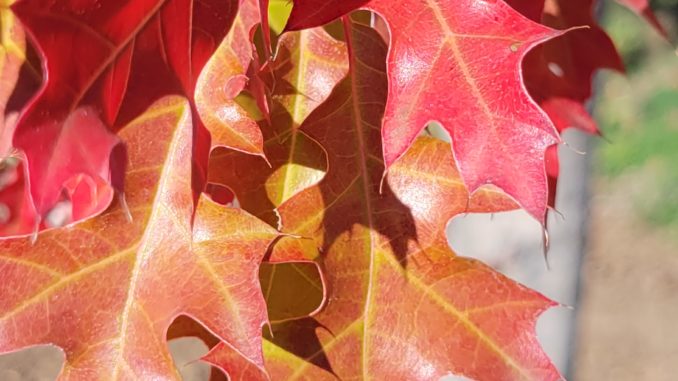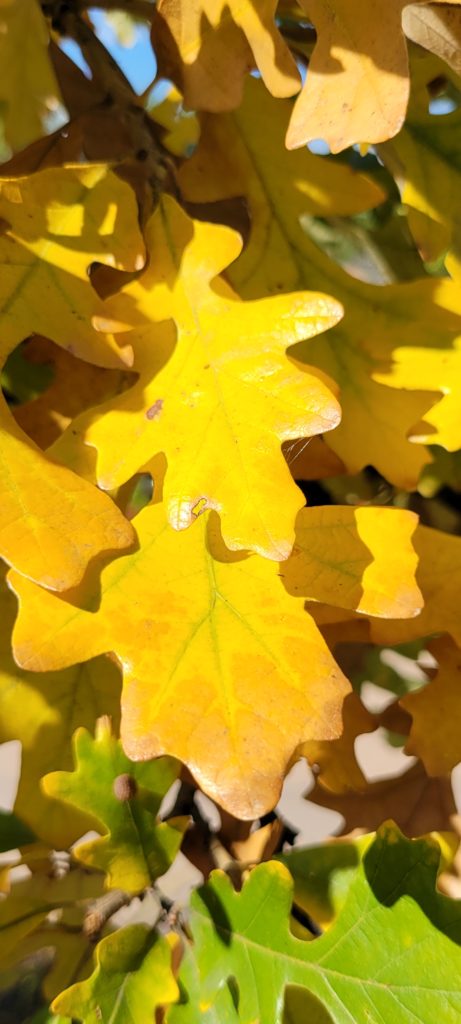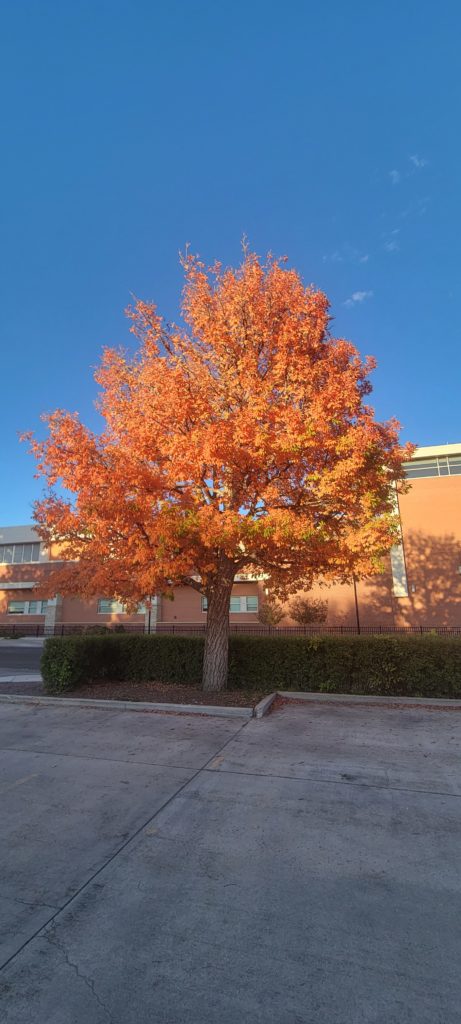

Jacob Mares | Gardens on Spring Creek
Nothing says fall like your favorite maple turning shades of crimson, or the leaves of aspen trees turning a brilliant yellow. Some years the intensity of these colors can create vibrant landscapes that have people stopping in their tracks. However, in other years these colors can seem dull in comparison or completely missing. The chemical reactions happening on a cellular level within the leaves is very much tied to the fall conditions our area experiences. The correct mixture of temperature and daylight helps create a situation where hidden pigments are allowed to shine.

Chlorophyll is the pigment we are most familiar with, as it is responsible for the green color in plants and photosynthesis – the process through which plants convert sunlight into food from carbon dioxide and water. So why do we see the color green when we look at leaves? Chlorophyll needs to absorb certain wavelengths of light (blue and red) to complete its job. The unused green wavelength is reflected back, and our eyes perceive the color. This color is present for most of the growing season because chlorophyll is the dominant pigment in the plant, but there are other pigments just waiting for the right opportunity to show off.
Carotene (orange) and xanthophyll (yellow) are two more pigments that are existing in the leaves that help absorb sunlight. We begin to see these pigments as the chlorophyll production shuts down with the coming of fall. Shorter days mean less sunlight and no need for green pigment. As the chlorophyll is broken down, we begin to see the hidden pigments that remain. Aspens (Populus tremuloides) turning bright yellow in the fall are a great example of xanthophyll. Ohio Buckeye (Aesculus glabra) flush with carotene can exhibit rich, orange hues. These pigments will fade as the plant slowly converts them to sugars and carbohydrates and goes dormant for the winter season.

The final pigment, anthocyanin, is responsible for the reds and purples we see in trees like maples, ashes, and oaks. This pigment is not present in all plants and sometimes needs very specific conditions to be created. As a tree goes dormant, it begins to ramp up the production of sugars. This, combined with cool evening temps and sunlight, trigger the production of anthocyanins. Colder temperatures in the evenings will help produce more of this pigment, but freezing temps can reduce amounts in the leaves. Fall weather consisting of good moisture, direct sunlight, and cool (not freezing) nights allows for the highest concentrations of these pigments. When these conditions are met, we are treated to an autumnal masterpiece that paints the landscape in shades of fall.
Support Northern Colorado Journalism
Show your support for North Forty News by helping us produce more content. It's a kind and simple gesture that will help us continue to bring more content to you.
BONUS - Donors get a link in their receipt to sign up for our once-per-week instant text messaging alert. Get your e-copy of North Forty News the moment it is released!
Click to Donate
